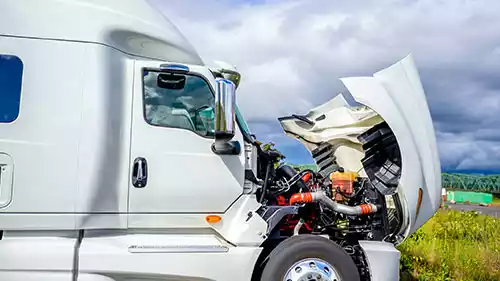More Difficulty Ahead for Struggling Carriers
July 21, 2022

The cost of doing business in the transport industry has risen substantially in recent months. The price of fuel is up, while line haul rates on are in decline. For these reasons, it seems harder than ever for carriers to make a living or even stay afloat in this field. What are the root causes of these challenges, and how did the transport industry arrive at this historically difficult position?
The Covid-19 pandemic led to a massive increase in demand for consumer goods. Online shopping became an outlet for bored people stuck at home on lockdown with bank accounts full of stimulus money. This increased demand for goods translated directly to more demand for freight transport. These were good times to be a carrier, and many operations that hoped to claim a piece of this historic freight boom for themselves were founded in this period.
What factors led to increased competition in the carrier market? Watch the Stay In Your Lane Podcast to learn more.
Some new carriers were upstart outfits, while others were formed by individuals leaving larger companies to strike out on their own. Whatever the case, the market was quickly flooded with an abundant supply of new carrier operations. More carriers meant more competition for the same resources. This setup worked for a time while post-pandemic demand for goods was still high. Now, with rampant inflation and the number of carriers and drivers already jumping ship, as well as operators parking equipment due to expenses for fuel and equipment.
The influx of carriers and cooling economy have all but eliminated the spot market for trucking. Volume in the spot market has slowed to a trickle, and what does exist is under lower contract pricing or even unsustainable pricing—even in the face of record-high diesel prices.
Fuel costs and line haul are two key pieces of this puzzle. It can be argued that line haul rates are affected more by supply and demand pressures, while the price of fuel is subject to factors in the overall economy. With shipping volume and consumer confidence falling by the day, conditions that prevailed through the pandemic era are beginning to recede. As time goes on, it is becoming clear that the booming pandemic economy was little more than a bubble fueled by trillions of dollars of government stimulus.
Bailouts and stimulus were needed to prevent a disaster in the economy at the start of the shutdowns. Whether or not these efforts went too far is another matter, as they could be one of the sources of the troubles we face today. Increased consumer demand led to companies ramping up their own orders. The previous just-in-time model was quickly cast aside as retailers built up inventory to match the seemingly bottomless demand for goods. When demand decreased sharply, companies were left holding the goods that customers no longer needed and they are buying down at the retailers and grocery stores.
When will the transport economy return to normal? For insights into this topic and more, watch The Stay In Your Lane Podcast.
Now, high profile companies are shifting into liquidation mode. Excess inventory is being shed at a loss in the hope of surviving a third and fourth quarter fiscal disaster. If companies can’t move the goods they already hold, demand for carriers is sure to suffer. This has led to decreased volume across the entire shipping market.
So where does this all end, and when can carriers expect market conditions to turn the corner? There are two possible markers that relief is on the horizon: consumer confidence, and fiscal policy. If the Federal Reserve’s recent efforts to raise interest rates are successful in their goal of avoiding recession, consumer confidence may begin to rebound and market conditions will stabilize. No matter the result, it takes several fiscal quarters to fully measure the success of these efforts. This means the transport economy still faces months of uncertainty.
Strong relationships with industry partners are essential for any carrier who hopes to make it through the difficult times ahead. Look to Triple T Transport as your trusted partner for the best third-party brokerage services available. Click here to learn more about what Triple T has to offer.












